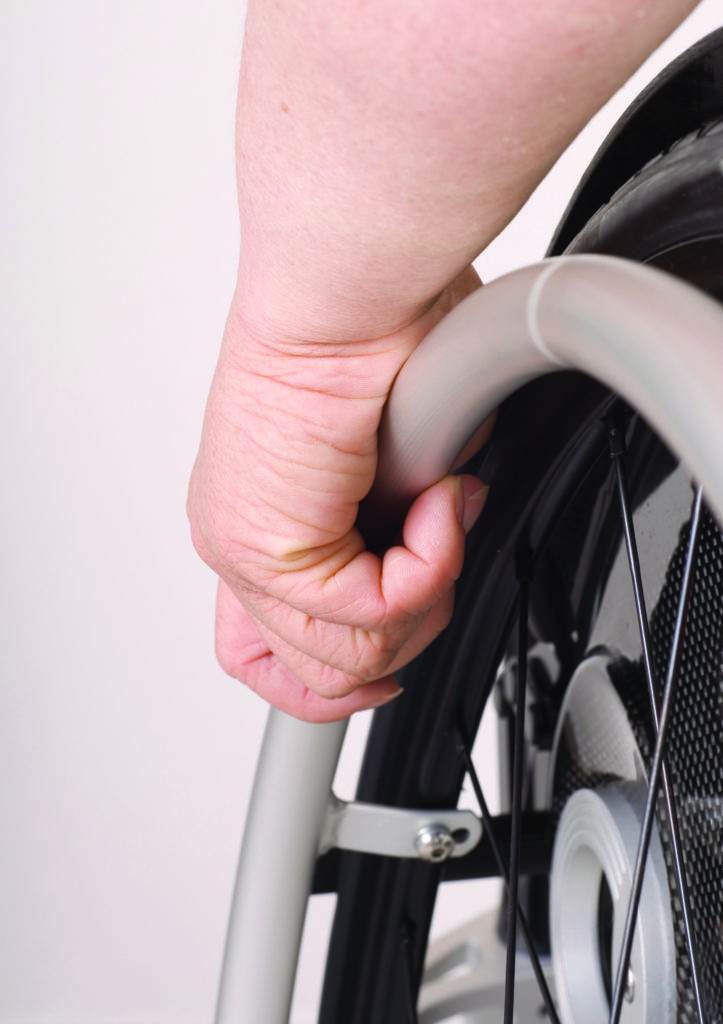The Real Tragedy of Disability
At 18, I was tree-climbing in coastal pygmy oaks when a supporting branch broke. My tailbone struck the ground with such force that my first lumbar vertebrae burst. The blunted bone shard that pressed into my spinal cord left me with mixed paralysis, which includes ankles and toes that I feel but can no longer move. Since the injury 17 years ago, I get around with a wheelchair, foot braces, and forearm crutches.
My experience of becoming paraplegic has been largely positive, which contradicts what most people presume. This misperception is largely due to the fact that nearly every telling of a disabled person’s story is from the perspective of a non-disabled person. From the outside, disability is generally seen as a woeful tragedy. Since nearly all of the people telling the stories of people with disabilities are ablebodied, this biased narrative perpetuates.
Again and again, the media places us in one of two roles: One is the pitiable invalid. The other models us as inspirational figures—the poster children of courage and perseverance who serve to inspire non-disabled people to greater heights. Instead of disabled characters being portrayed in roles where their bodies aren’t a focus, we have long been used as caricatures of overly dramatized tragedies.
Discrimination against people with disabilities also comes from our cultural emphasis on economic productivity, wherein those lacking sufficient brute strength are deemed less valuable. This worldview ignores the myriad talents that fall outside the scope of physical strength and agility.
In truth, rather than being degraded by my injury, I am richer for what I’ve learned—and for what I continue to learn—from this circumstance. The human capacity to adapt is truly profound, and the strength of the human spirit can be revealed when we choose to remain embodied through loss and change.

Carrying a greater physical burden doesn’t necessarily mean that our mental, emotional, or spiritual burdens are greater. Facing physical challenges can actually lighten the load in these other areas. The physical challenges I face are sometimes overwhelming, relentless, and brutal, but my threshold for coping with challenge has deepened in unforeseen ways. Suffering is valid, but I’d like to make more space in our culture for joy in disability as well.
My interpretation of my paraplegia is simple—at one time I got around one way and now I get around in others. Having survived a near-death experience, I understand that my life is a gift. My wheelchair isn’t a sad symbol of a life that went off course, but rather an incredible tool of empowerment for which I am deeply grateful. It has allowed me to travel the world, raise my son, and access countless otherwise inaccessible places.
Almost daily, people approach me to express their assumption that I am trying to “get better,” or they ask me, “What is wrong?” I am also told that I am brave and inspirational by those who are determining this based solely on my use of crutches or a wheelchair to go about my day. In case you didn’t know it, this is ableism.
The ableist worldview is that able-bodied people are the norm, and that disability is a shortcoming, or a failing. Rather than seeing people with physical challenges as an expression of human diversity akin to race, ethnicity, sexual orientation, or gender, we are seen as flawed and in need of being “fixed” to be restored to wholeness. This is called the medical model of disability. In contrast to this influential viewpoint, the social model of disability says that disability is caused by the way a society is organized rather than by a person’s impairment.
Imagine a world where wheelchairs are the norm. As such all the doors and ceilings would be lower. In this context, a walking person would repeatedly be hitting their head on beams and chandeliers and would need to stoop to get around. Would those who are walking be considered flawed just because their environment wasn’t designed to accommodate their unique needs? This is how society disables people. Alternately, inclusive design and practices empower a marginalized people with a dignity far too often denied.
People with disabilities have always made up a percentage of any population. We are the world’s largest minority group. Rather than being overlooked, pitied, and deemed heroic, people with physical challenges could be equally valued for the myriad other talents we possess. It would feel revolutionary to be related to as a whole and equal peer within our culture. We have enough to manage physically without added societal discrimination.
If you ask me, marginalizing a fifth of our population based on limitations that better technologies could remedy is the real tragedy here. I view my disability as one of the most beautiful parts of me, one that continuously provides many wonderful lessons and experiences. I can honestly say that it as given me far more than it has taken in the ways that matter most. I hold this respectful relationship with my own body, and invite you to do the same.
Misha Montoya is a lifelong student and a disability activist, mother, para-athlete, spiritual practitioner, and world-travelled lover of truth.